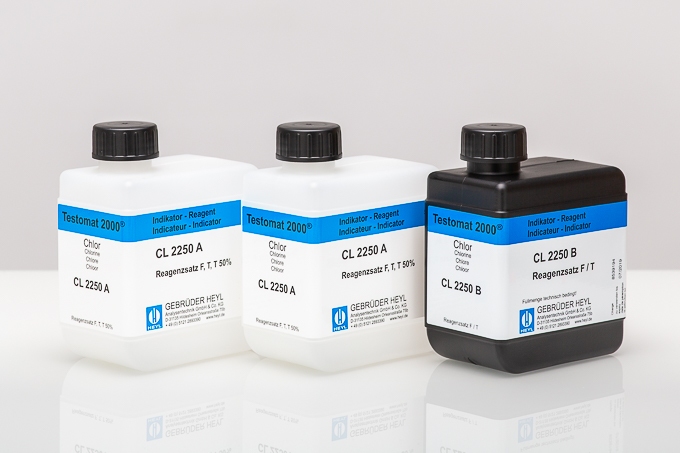Original reagents: Consumption calculator and optimization calculator
Optimization calculator for original reagents
Online calculation tool to calculate reagent consumption as well as optimization calculation of reagent consumption according to:
- Measurement parameter
- The device type is automatically assigned
For the following measurement parameters:
- Bromine
- Chlorine dioxide
- Chromium VI
- Iron
- Total chlorine
- Polymer
- Silicate SiO2
- Sulfite
- Free chlorine
- Ortho phosphate
Online calculation according to limit values and envelope points in different measuring ranges.

After displaying the result, you can directly order or subscribe to the respective indicator in the online store via the link.
FAQ for the correct use of the online reagent consumption calculator
Why do I need to select a device?
Different instrument designs are available for the measurement of the available parameters. The reason for this is the specific wavelength required for photometric analysis, at which the analysis for the selected parameter takes place.
Why is no specification of a limit value to be monitored required?
The analysis of the so-called non-hardness parameters is based on standardized DIN procedures. Each of these methods always involves the addition of a fixed quantity of reagent. The limit value to be monitored therefore has no influence on the consumption of the reagents.
What does interval mean?
The interval is the time interval between the end of the first analysis and the start of the following analysis. For the calculation of the reagent consumption, the interval of your measurement is required. At the same time, this interval is used in the calculation for a check of the reagent consumption within the shelf life of the respective reagent (set) guaranteed by us. If you have selected an interval for which reagents have not yet been consumed at the end of the shelf life, an optimized analysis interval will be suggested in the result. This is calculated so that the reagents are completely used up at the end of the shelf life.
What are the effects / consequences of changing the interval?
The shorter the interval (distance between two analyses), the higher the annual reagent consumption. Conversely, the longer the interval, the less reagent is required per year. The interval should always be selected to suit the monitoring task.
Which intervals can be entered?
All time intervals can be entered in the consumption calculator. All Testomats have an external start or start/stop input.
If this is not used, the devices operate with the following maximum intervals, which can be programmed on the device itself:
- Testomat 2000: Br2, CLF/CLT, ClO2, CrVI, FE and SO3: max. 99 minutes
- Testomat 2000: PO4 and polymer: max. 255 minutes
- Testomat 808 – SiO2: max. 480 minutes
Why do I need to specify the hours per year and days per year?
The usage time of the devices per day or per year has a direct influence on the indicator consumption. In order to provide you with the best possible approximation of your actual requirements, we therefore take this value into account for our calculation.
Why am I sometimes shown two variants?
In some cases, large containers for the non-hardness parameters are available for the Testomat in addition to the standard containers (500 ml). In these cases, the consumption is calculated for both container sizes. The calculation is shown separately for each container size (standard and large containers).
What does the note "You can shorten the interval from X to Y, ..." mean?
The calculator calculates the expected annual consumption based on your specifications. This is compared with the shelf life of the respective reagent (set) using an algorithm. If the analysis interval you have entered results in residual quantities in the containers at the end of the shelf life, an optimized analysis interval is suggested. This interval results in the reagent being completely used up at the end of the shelf life. This does not result in any additional costs and at the same time you increase the monitoring frequency and thus process reliability.